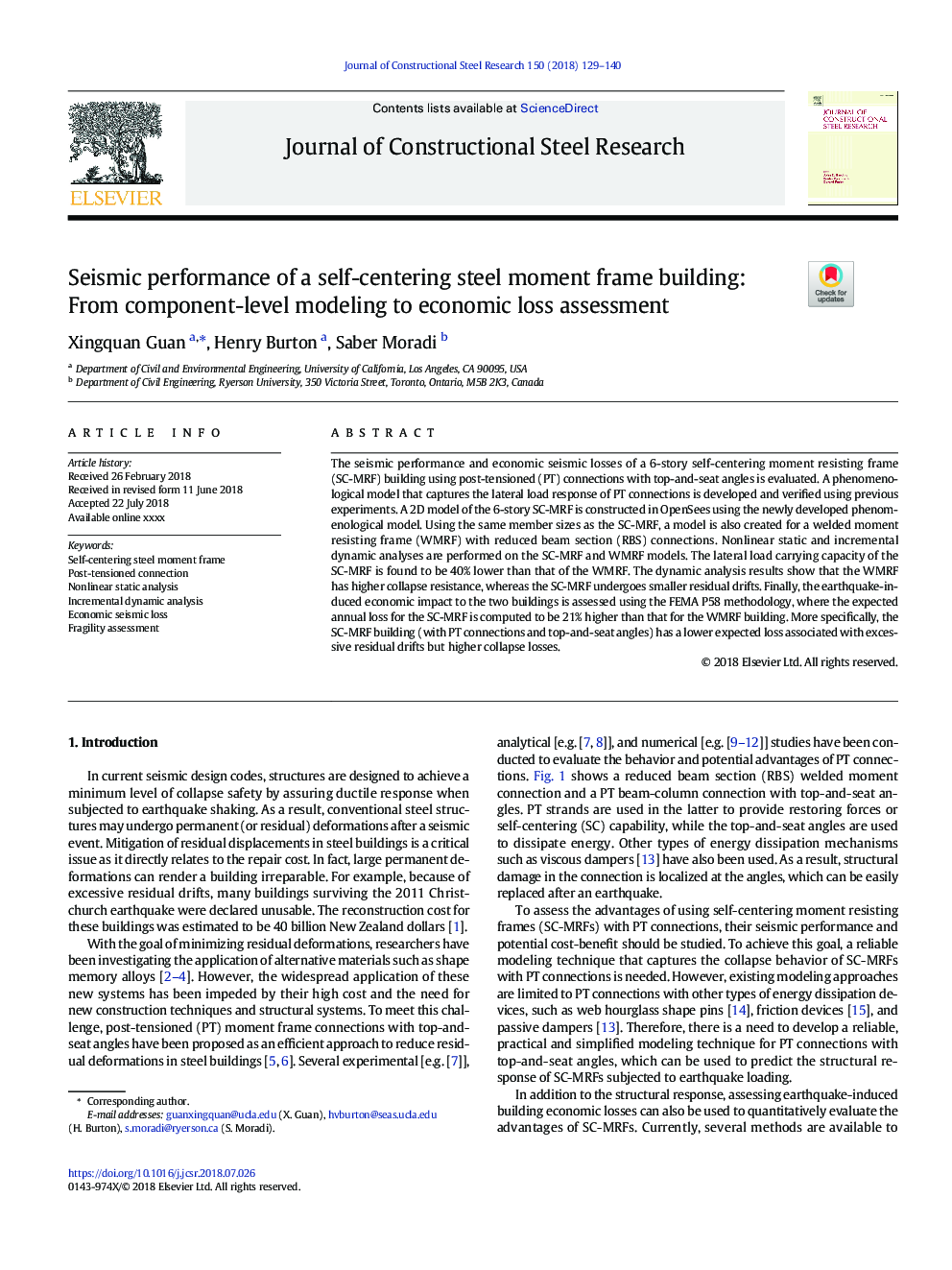| Article ID | Journal | Published Year | Pages | File Type |
|---|---|---|---|---|
| 8947138 | Journal of Constructional Steel Research | 2018 | 12 Pages |
Abstract
The seismic performance and economic seismic losses of a 6-story self-centering moment resisting frame (SC-MRF) building using post-tensioned (PT) connections with top-and-seat angles is evaluated. A phenomenological model that captures the lateral load response of PT connections is developed and verified using previous experiments. A 2D model of the 6-story SC-MRF is constructed in OpenSees using the newly developed phenomenological model. Using the same member sizes as the SC-MRF, a model is also created for a welded moment resisting frame (WMRF) with reduced beam section (RBS) connections. Nonlinear static and incremental dynamic analyses are performed on the SC-MRF and WMRF models. The lateral load carrying capacity of the SC-MRF is found to be 40% lower than that of the WMRF. The dynamic analysis results show that the WMRF has higher collapse resistance, whereas the SC-MRF undergoes smaller residual drifts. Finally, the earthquake-induced economic impact to the two buildings is assessed using the FEMA P58 methodology, where the expected annual loss for the SC-MRF is computed to be 21% higher than that for the WMRF building. More specifically, the SC-MRF building (with PT connections and top-and-seat angles) has a lower expected loss associated with excessive residual drifts but higher collapse losses.
Keywords
Related Topics
Physical Sciences and Engineering
Engineering
Civil and Structural Engineering
Authors
Xingquan Guan, Henry Burton, Saber Moradi,
